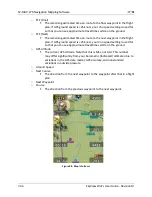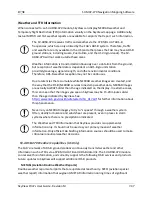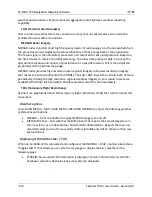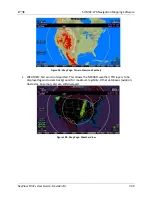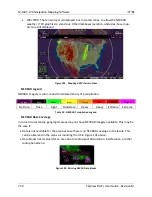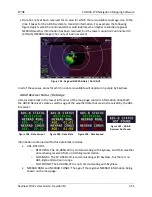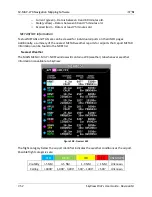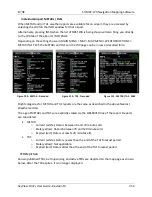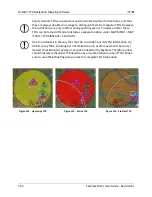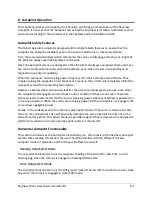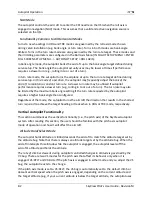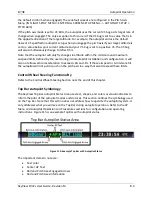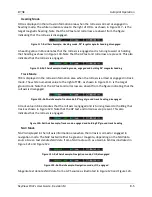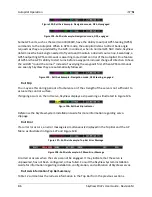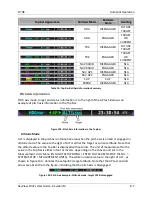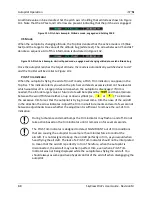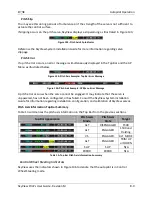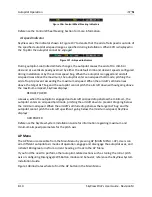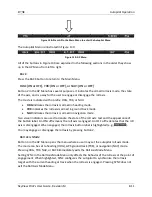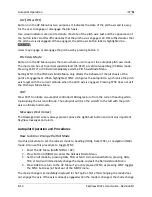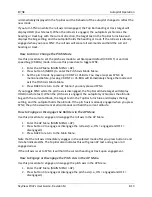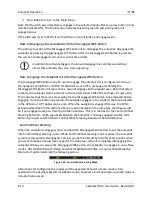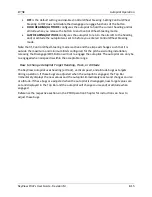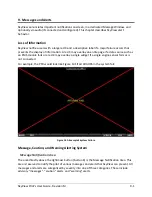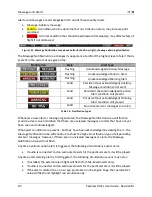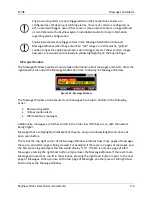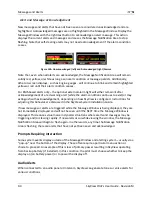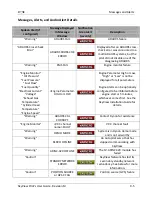
Autopilot Operation
8-6
SkyView Pilot’s User Guide - Revision M
Figure 123–Roll Axis Example: Navigation mode, GPS, disengaged
Figure 124–Roll Axis Example: Navigation mode, GPS, engaged
Some GPS units, such as the Garmin 430/430W, have the ability to output GPS Steering (GPSS)
commands to the Autopilot. When in GPSS mode, the autopilot listens to direct bank angle
requests as they are provided by the GPS. In contrast, when in normal GPS NAV mode, SkyView
determines the bank angle needed to fly onto and maintain a desired course line. Essentially, a
GPSS outputting GPSS commands is asserting more direct control of the Autopilot. One feature
of GPSS is the GPS’s ability to start turns before a waypoint-induced change of direction to have
the aircraft “round the corner” instead of overlying the waypoint first. When GPSS commands
are seen by SkyView they are automatically followed:
Figure 125 - Roll Axis Example: Navigation mode, GPS Steering, engaged
Roll Slip
You may see this during periods of turbulence or if the strength of the servo is not sufficient to
actuate the control surface.
If slipping occurs on the roll servo, SkyView displays a slip warning as illustrated in Figure 126.
Figure 126–Roll Axis Slip Indicator
Reference the SkyView System Installation Guide for more information regarding servo
slippage.
Roll Error
If a roll error occurs, an error message is simultaneously displayed in the Top Bar and the AP
Menu as illustrated in Figure 127 and Figure 128.
Figure 127– Roll Axis Example: Top Bar Error Message
Figure 128–Roll Axis Example: AP Menu Error Message
A roll error occurs when the servo cannot be engaged. It may indicate that the servo is
unpowered, has not been configured, or has failed. Consult the SkyView System Installation
Guide for information regarding installation, configuration, and calibration of SkyView servos.
Roll Axis Information Top Bar Summary
Table 12 summarizes the roll axis information in the Top Bar from the previous sections.

